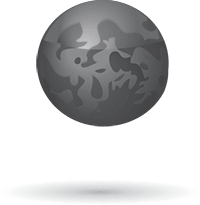Many, if not most, animals go through a significant change in appearance from juvenile to mature adult; this is known as ontogeny. Oftentimes, this ontogenetic change will be quite subtle. However, many winged insects, particularly those in the Order Odonata (comprised of Dragonflies and Damselflies), go through substantial changes, and one such species of dragonfly that fits that bill is the Seaside Dragonlet.
The Seaside Dragonlet ( Erythrodiplax berenice) is a medium-sized dragonfly that can achieve body lengths of 1¼ inches and a wingspan of just under 2 inches. Like other insects, it has three body parts: the head, the thorax (what the wings and legs are attached to), and the abdomen. Like many other species of dragonflies, this species is sexually dimorphic in appearance, meaning males and females can be differentiated from each other by coloration and/or overall build. Mature males are very dark indigo with faint yellow spots on abdomen. The wings are translucent with a distinctive orange bar that is outlined in black along the outer anterior of each of the four wings. Females also darken with age but can have three different appearances as they mature: a Male-like form, an Unspotted form, and a Spotted form. In the malelike form the thorax becomes dark before the abdomen does, while in the unspotted form the abdomen becomes dark before the thorax. In the spotted form, the abdomen also becomes dark before the thorax, but there is a brown blotch on each wing at the juncture with the thorax. This form rarely becomes completely dark. Juveniles are mostly orange yellow with dark undertones.
When perched this species will hold their wings open horizontally at a slight downward angle. This is one of the many ways to differentiate “true” dragonflies and damselflies as the latter will sit with their wings held together, upright, and closed over the abdomen.
Seaside Dragonlets can be observed along the eastern seaboard westward along the Gulf Coast southward to Venezuela. In this great state it can be seen all along the Gulf Coast from Sabine Lake to Brownsville. It is in these areas of salt marshes and mangroves that make their habitats unique. It is the only species of dragonfly in the Western Hemisphere that can breed in saltwater. However, there is a unique population along the Pecos River that is isolated but well established.
All dragonflies are predatory insects feeding primarily on flies, mosquitoes, and other small flying insects. Seaside Dragonlets may eat up to 10% of their body weight in a day, which equates to it eating literally hundreds of smaller insects daily. It hunts from a perching position, “dashing” through the air to obtain its prey like a living combat aircraft. It will not perch in one spot too long, instead moving frequently within a fiveyard area of shoreline to better its chances of feeding. It can be quite aggressive in obtaining its perch, fighting off other dragonlets as well as other varieties of dragonflies. The more aggressive individuals are the ones who have a higher success rate of survival.
Seaside Dragonlets, like other dragonflies, are a key indicator on the health of an ecosystem. As habitats decrease, so do the populations of dragonflies. And with the sheer number of insects that just one individual can consume in a day, it is apparent the importance that these flighted creatures play in our environment.





















